The AYANEO 3 is here, setting a new standard in portable gaming with advanced technology, outstanding design, and an immersive user experience. As AYANEO’s flagship console of the year, this device redefines the portable gaming PC. Here’s a closer look at what the AYANEO 3 brings to the world of mobile gaming PCs.
[UPDATED December 27th 2024]
Further details have been announced for the control scheme of the AYANEO 3. Instead of your traditional fixed controllers set up and layout, the AYANEO 3 will feature modular controls called Magic Modules! While no exact modules have been announced we can tell from the images there will be at least six, featuring combinations of D-Pad + Analogue, D-Pad + touchpad and four gaming buttons + Analogue and even a six button module.

It is a great idea as we know the controls layout and setup is one of the more highly contested discussions whenever a new handheld is announced.
Thoughtfully Crafted for Comfort and Aesthetic Appeal
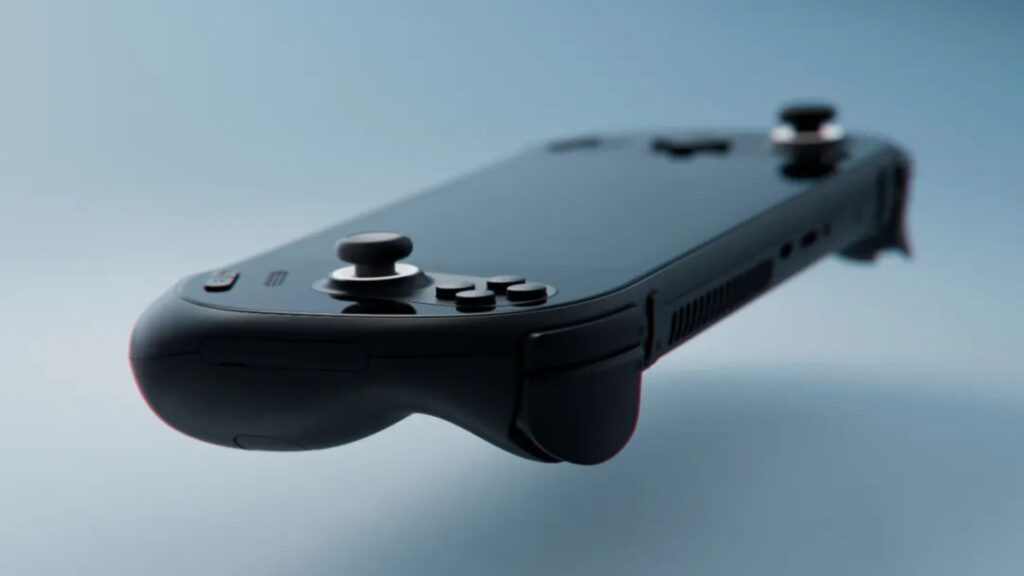
With AYANEO 3, the brand has preserved its signature streamlined look, designing a gaming console that feels natural and comfortable in your hands. Every element, from its refined lines to the smooth finish, is designed to be visually appealing and comfortable for extended play. This device not only looks sophisticated but also ensures an ergonomic grip that’s ideal for a handheld gaming computer.
Exceptional Visuals with Two Display Options
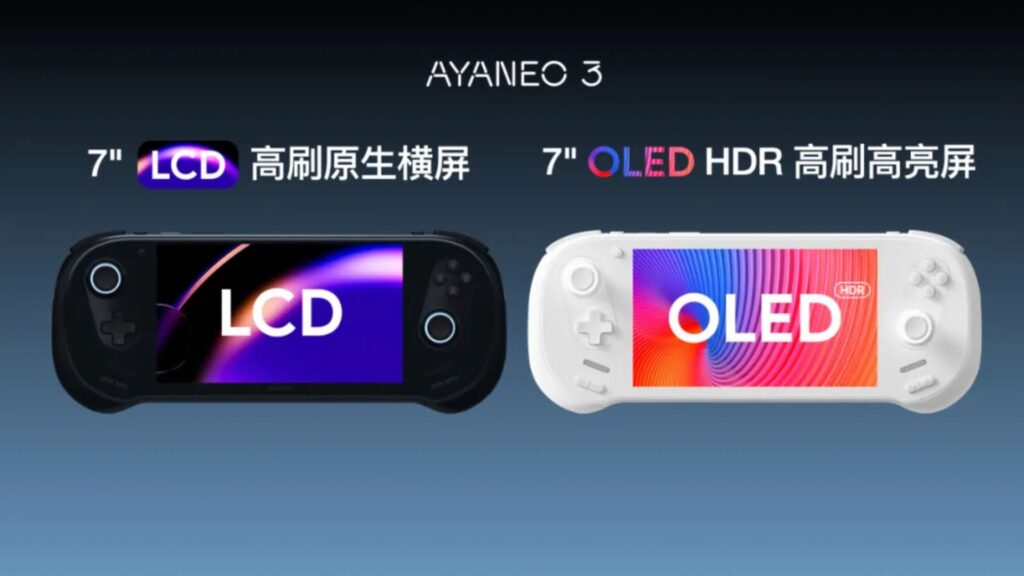
The AYANEO 3 offers gamers a choice between two 7” screens: a high-refresh LCD and a bright OLED HDR display. Both options provide vibrant visuals with smooth frame rates that bring your game to life, allowing players to fully enjoy every detail of their game. This flexibility in screen options lets users experience exceptional clarity, whether they choose the LCD’s sharpness or the OLED’s rich contrasts.
High-Powered Performance with AMD Processors
Under the hood, the AYANEO 3 provides two powerful processor choices to meet different gaming demands. Gamers seeking a leading-edge experience can select the AI-enhanced AMD Ryzen™ AI 9 HX 370, designed for smoother gameplay and greater efficiency. This processor delivers optimized frame rates and improved battery life, making it ideal for a wide range of high-performance games.

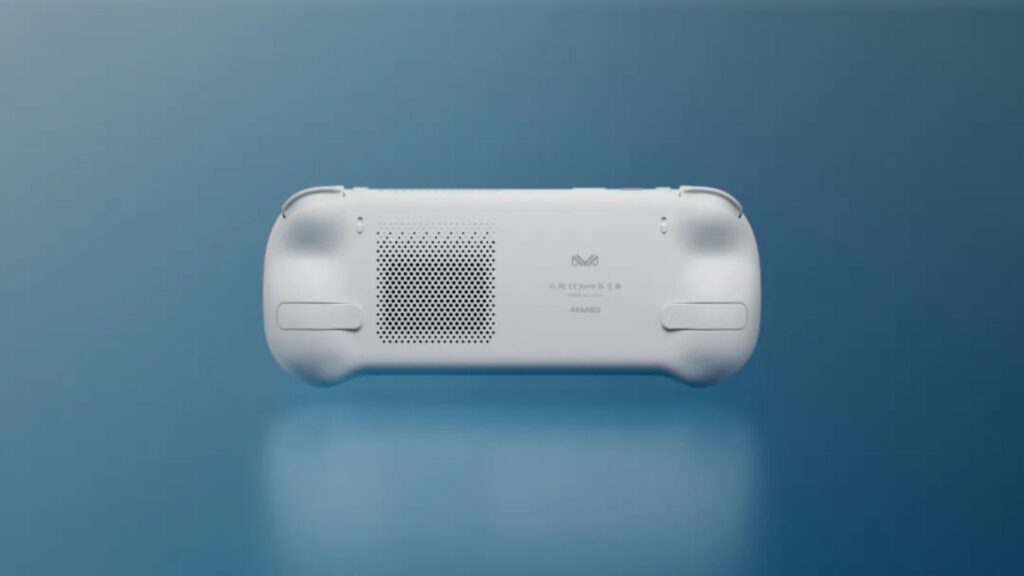
For gamers looking for a classic powerhouse, the AMD Ryzen™ 7 8840U offers reliable performance without compromise. Balancing power and efficiency, this processor is built to handle both high-demand and casual games, making this compact gaming PC suitable for everyday use and intense sessions alike. With these options, the AYANEO 3 empowers players to choose the performance that best suits their style.
Enhanced Controls for Seamless Gaming
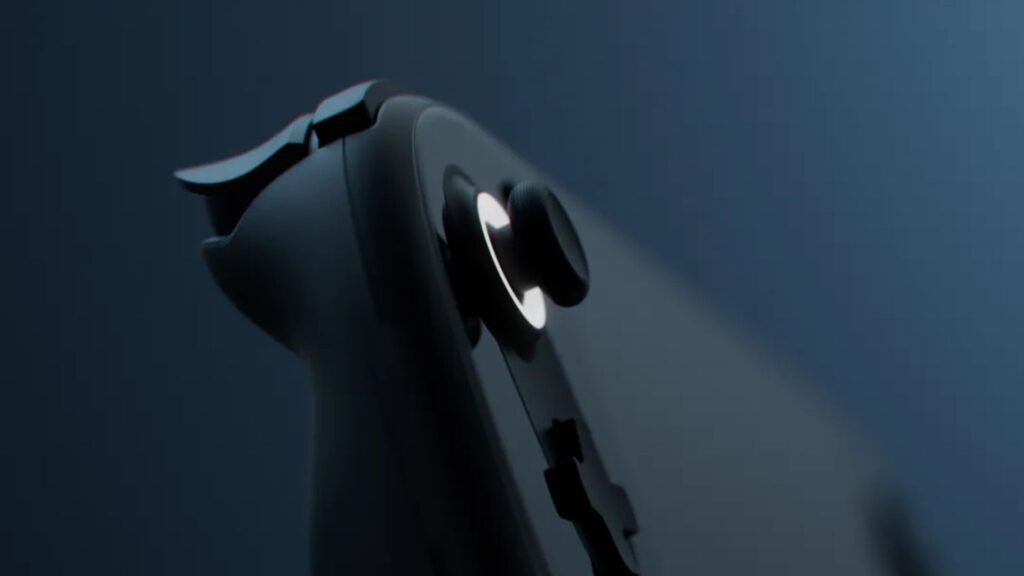
AYANEO has elevated the control experience in the AYANEO 3 with an innovative back button and a trigger lock. The back button enhances functionality, offering more options for in-game actions, while the trigger lock improves handling in modern and retro games. Seamlessly integrated into the device’s design, these additions allow for a more intuitive and immersive control experience, making it a standout handheld gaming computer.
Immersive Audio for Engaging Gameplay
Thanks to front-facing speakers, the AYANEO 3 offers a fully immersive audio experience that puts players right in the middle of the action. Every sound, from subtle footfalls to explosive effects, is enhanced for clarity, bringing an added layer of immersion. The AYANEO 3’s upgraded sound system offers a surround-sound experience that enhances the richness and detail of every gaming moment on this compact gaming PC.
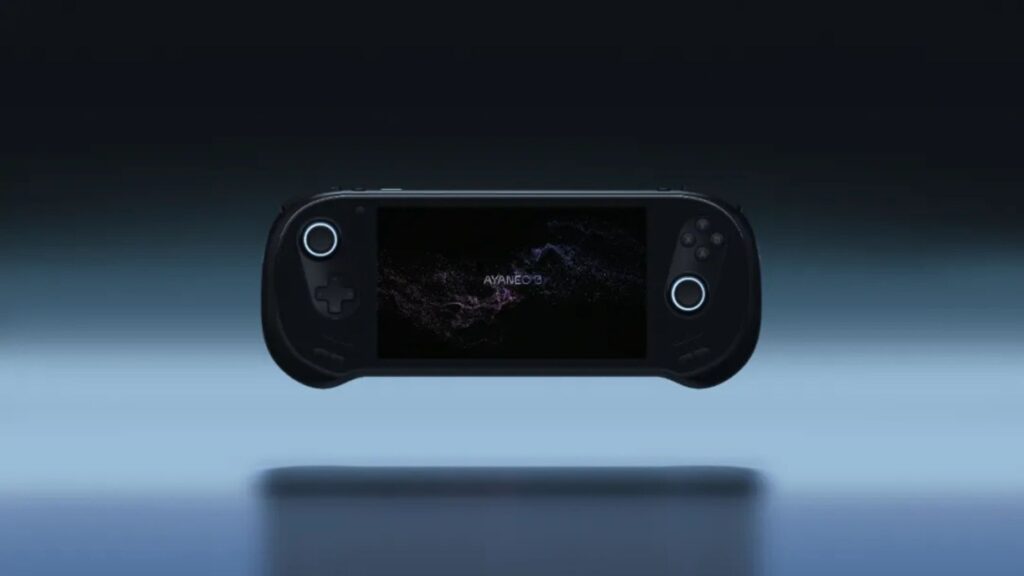
Customizable Components Built for Gaming
With self-developed components, the AYANEO 3 delivers a tailored gaming experience that reflects AYANEO’s dedication to innovation. This portable gaming computer offers unique, in-house features that create a personalized gaming environment for users. Every aspect is optimized to adapt to the gamer’s preferences, making this more than just a mobile gaming PC—it’s a device designed for personal gaming expression.
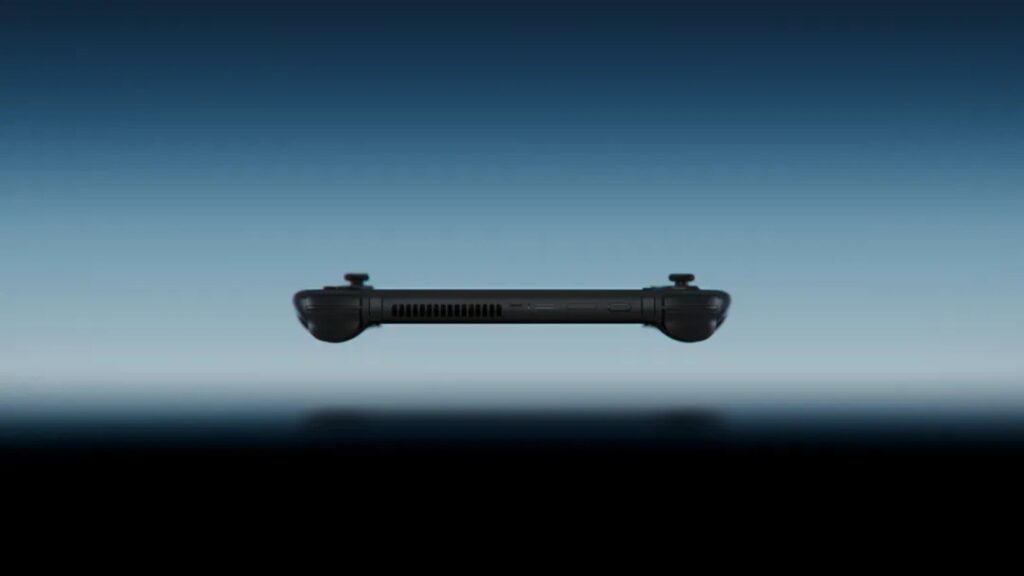
A New Chapter in Handheld Gaming PCs
AYANEO 3 signals a fresh direction in handheld gaming PCs. By pushing beyond the typical limitations of portable devices, it redefines the way players interact with their games. Stay tuned as AYANEO unveils more exciting updates and features, further enhancing the experience on this groundbreaking handheld gaming PC.
ORIGINAL ARTICLE BELOW:
The AYANEO 3, the latest iteration in AYANEO’s line of handheld gaming PCs, is generating buzz among enthusiasts with its rumored high-end specifications and potential cutting-edge features. While official details remain unconfirmed, our own speculation based on currently available CPU, RAM and storage points to significant upgrades in processing power, display technology, and connectivity options that could set a new standard for portable gaming devices.
Please remember this is currently based on speculation. We will update here when details are announced officially.
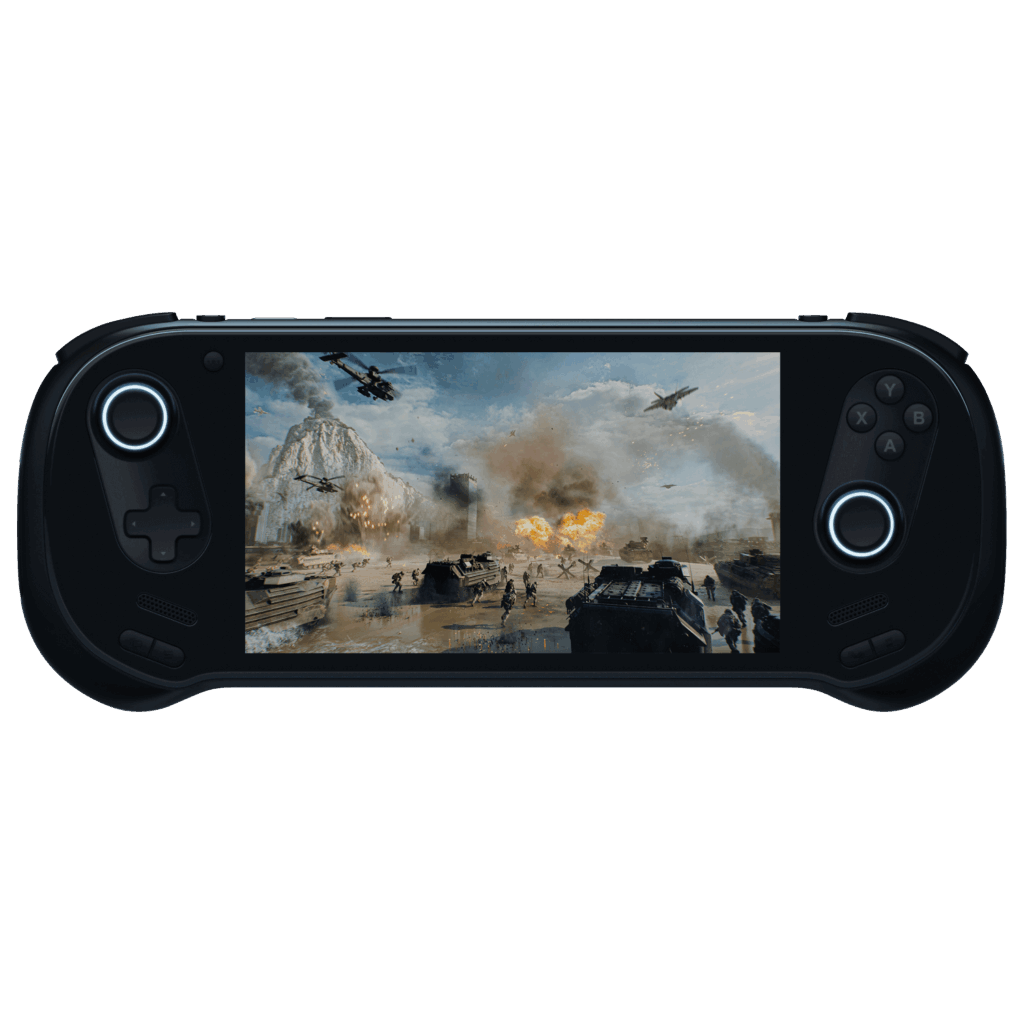
AYANEO 3
- AMD Ryzen™ AI 9 HX 370 / Ryzen™ 7 8840U
- AMD Radeon 890M / 780M / 2900 / 2700 Mhz
- up to 64GB LPDDR5X @ 7500 MT/s
- up to 4TB High-Speed PCI-E 4.0 NVMe SSD
- WiFi 6E & Bluetooth 5.3 Support

PAYMENT INFO
We use the latest technology in Payment Processing, which allows you to checkout via Apple Pay, Google Pay, your Debit/Credit Card, PayPal or BNPL Methods such as Klarna, Affirm or AfterPay for a fast and secure experience.
WARRANTY
1 Years Warranty from DROIX Global for your peace of mind
QUALITY ASSURANCE & PRE-DISPATCH TESTING
Ensuring Customer Satisfaction at the Highest Standard: Every device undergoes rigorous testing and a multi-point quality assurance check before it is shipped. Our dedicated team verifies performance, functionality, and component integrity to guarantee your AYANEO device is in perfect working order upon arrival, providing you with confidence and peace of mind.
PRICING, TAXES AND SHIPPING
Note:
- United States Customers: The displayed price does NOT include TAX nor duties. Liability to clear customs and pay any associated tax/duties lies on the customer.
- EU Customers: The displayed price includes applicable TAX, which may be up to 25% depending on your country.
- Canada Customers: The displayed price includes applicable taxes, which may include 5% GST and additional Provincial Sales Taxes (PST), Harmonized Sales Tax (HST), or Quebec Sales Tax (QST), depending on your province.
For Our USA Customers: Orders are dispatched DAP (Delivered At Place). While customers are responsible for payment of any applicable tariffs, we draw on our extensive experience shipping from the UK to ensure you pay the least possible charge. Based on our records, these charges typically do not exceed 10% of the item value.
For EU Customers ONLY: Express DDP (Delivered Duty Paid). This means:
- All customs duties and taxes are included in the price displayed on the product page.
- You will not need to pay any additional charges upon delivery.
- In the rare event of customs-related issues, our team will handle the customs clearance process on your behalf to ensure a smooth delivery experience.
- If you decide to return your order or request a refund, please be aware that taxes and duties paid on your behalf under DDP terms cannot be refunded.
Important Information About Returns:
Please refer to our Terms & Conditions for detailed information.
CUSTOMER SUPPORT
Got a question? We’re a short text away from having your issue sorted!
PACKAGE INCLUDES
- 1x AYANEO 3
- 1x Power Plug (EU/US)
- 1x USB Type-C Cable
- 1x User Manual
AYANEO 3 with Ryzen 9 HX370 and 890M makes sense
The AMD Ryzen AI 9 HX 370 processor emerges as a strong candidate for powering the rumored AYANEO 3 handheld gaming PC. This cutting-edge chip combines 4 Zen 5 cores and 8 Zen 5c cores, offering a total of 12 cores and 24 threads. With a base clock of 2.0 GHz and boost frequencies up to 5.1 GHz, it promises significant performance improvements over previous generations.
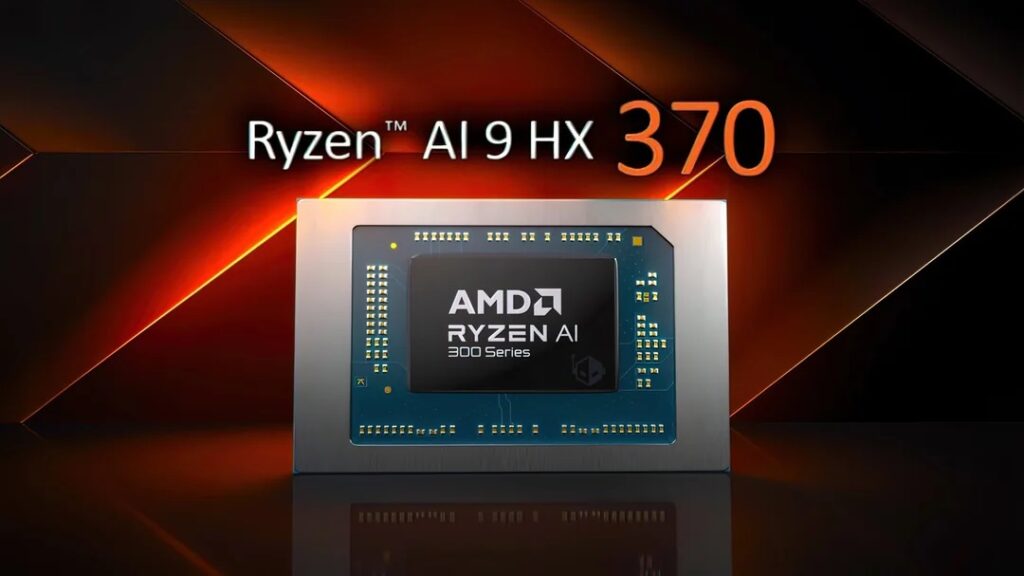
The integrated Radeon 890M GPU, based on RDNA 3.5 architecture, features 16 compute units and can boost up to 2900 MHz.. This powerful iGPU has shown impressive gaming capabilities, outperforming its predecessor by up to 57% in some titles. For a handheld like the AYANEO 3, this could translate to smooth 1080p gaming experiences in many modern titles, albeit with adjusted settings. The chip’s configurable TDP of 15-54W also allows for flexible power management, crucial for balancing performance and battery life in a portable form factor.
- 12 cores (4 Zen 5 + 8 Zen 5c) / 24 threads
- Base clock: 2.0 GHz, Boost up to 5.1 GHz
- Radeon 890M iGPU with 16 CUs, up to 2900 MHz
- Configurable TDP: 15-54W
- Support for LPDDR5X-7500 memory
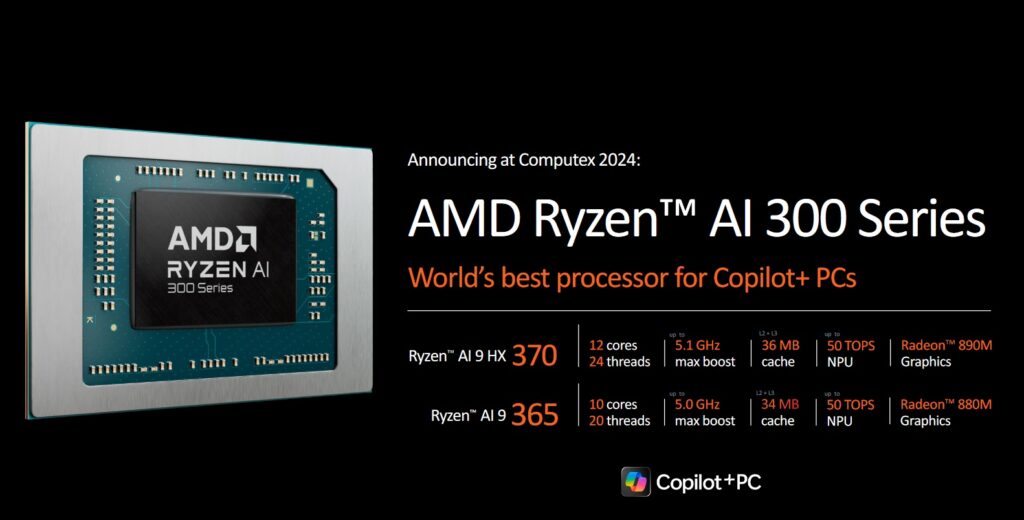
The AMD Ryzen AI 9 HX 370 processor introduces significant AI capabilities to handheld gaming PCs, potentially revolutionizing the AYANEO 3’s performance. At the heart of its AI prowess is the XDNA 2-based Neural Processing Unit (NPU), capable of delivering up to 50 TOPS (Trillion Operations Per Second) of AI compute power This dedicated AI engine is designed for efficient handling of sustained, heavily used AI workloads at low power consumption.The HX370’s AI capabilities extend beyond the NPU:
- The integrated Radeon 890M GPU, with its 16 RDNA 3.5 compute units, is optimized for AI workloads requiring parallel processing.
- The Zen 5 CPU cores are tailored for single-inference, low-latency AI tasks3.
These combined AI resources enable advanced features like intelligent power management, enhanced graphics upscaling, and real-time language translation. For gaming, this could translate to improved frame rates through AI-assisted rendering techniques, more realistic NPC behaviors, and dynamic in-game adjustments based on player patterns. The AI capabilities also position the potential AYANEO 3 as a versatile device for content creation and productivity tasks that leverage machine learning algorithms.
If implemented in the AYANEO 3, the Ryzen AI 9 HX 370 could potentially offer a significant leap in both CPU and GPU performance compared to previous AYANEO models, positioning it as a formidable contender in the high-end handheld gaming PC market.
RAM and Storage Options
The AYANEO 3 is expected to offer significant upgrades in RAM and storage configurations, building on the company’s trend of pushing hardware boundaries in handheld gaming PCs. Based on AYANEO’s previous models and industry trends, the AYANEO 3 could feature:
- RAM options of 32GB and 64GB LPDDR5X, potentially running at speeds up to 7500 MT/s
- Storage configurations ranging from 512GB to 2TB, likely using PCIe 4.0 NVMe SSDs
- Possible inclusion of a microSD card slot for expandable storage, supporting high-speed UHS-II cards
The use of LPDDR5X memory would provide improved bandwidth and power efficiency compared to previous generations, enhancing overall system performance and potentially extending battery life. The high-capacity storage options would allow users to install multiple AAA titles and emulators without constantly managing storage space. Additionally, if AYANEO implements UFS 4.0 flash memory in higher-end models, users could experience significantly faster read and write speeds, further improving game loading times and system responsiveness.
Display Specifications Overview
The AYANEO 3 is expected to feature a significant upgrade in display technology, potentially offering a 7-inch bezel-less full screen with OLED technology. This would be a notable improvement over previous models, such as the AYANEO 2S, which featured a 7-inch IPS LCD panel. The move to OLED could provide several benefits:
- Higher contrast ratios and deeper blacks for more vibrant visuals
- Faster response times, reducing motion blur in fast-paced games
- Potentially lower power consumption, especially when displaying darker content
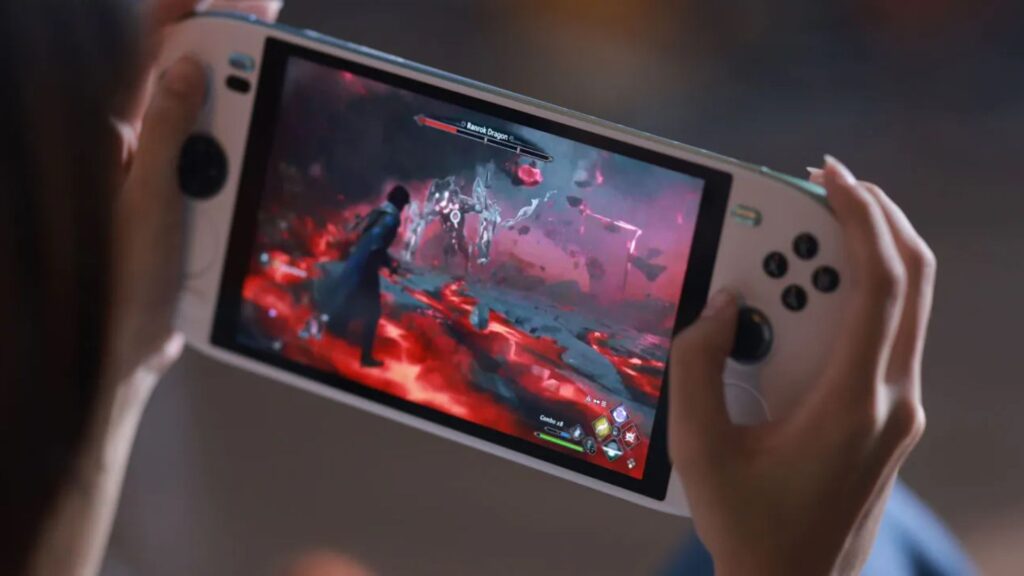
The resolution is likely to be at least 1080p (1920×1080), matching or exceeding the 1200p resolution of the AYANEO 2S. However, given the trend towards higher pixel densities in handheld devices, there’s a possibility of a 1440p (2560×1440) display, which would provide sharper visuals and more screen real estate for PC gaming.Other potential display features could include:
- High refresh rate support, possibly up to 120Hz for smoother gameplay
- HDR certification for enhanced color range and brightness in supported games
- Anti-glare coating to improve visibility in various lighting conditions
While not confirmed, these display specifications would align with AYANEO’s history of pushing hardware boundaries in the handheld gaming PC market.
AYANEO 3 Design Evolution
The AYANEO 3 design is likely to build upon the sleek aesthetics and ergonomic features of its predecessors while introducing innovative elements. Drawing inspiration from the AYANEO 2 and 2S, the new model may retain the popular 7-inch borderless screen design, offering an immersive visual experience with a high screen-to-body ratio.

The device could feature a refined version of the “baby sleeping position” grip, which has been praised for its comfort during extended gaming sessions.Taking cues from the larger AYANEO KUN, the AYANEO 3 might incorporate advanced cooling solutions, potentially adapting the three-copper tube heat dissipation system to fit its more compact form factor.
The device could also adopt the KUN’s dual intelligent touchpads, offering enhanced control options and PC-like functionality in a handheld format. Could we see a dual display device similar to the AYANEO Flip? Additionally, the AYANEO 3 may feature an all-metal midframe for improved durability and premium feel, a design element introduced in the Pocket S series. The color palette could include elegant options like “Silver Wing,” “Black Feather,” or “White Silk,” reflecting AYANEO’s commitment to sophisticated aesthetics.
Potential USB 5 Integration
While official specifications for the AYANEO 3 have not been announced, the potential integration of USB 5 technology could significantly enhance its connectivity capabilities. USB 5, the next generation of USB standards, is expected to offer several improvements over its predecessors:
- Increased data transfer speeds, potentially reaching up to 80 Gbps
- Enhanced power delivery capabilities, allowing for faster charging and powering of high-performance peripherals
- Improved compatibility with a wide range of devices and accessories
- Reduced latency for smoother gaming experiences, especially when connecting external displays or storage devices
If implemented, USB 5 could position the AYANEO 3 as a cutting-edge handheld gaming PC, offering seamless connectivity with external GPUs, high-resolution displays, and next-generation gaming peripherals. However, as USB 5 is still in development, its inclusion in the AYANEO 3 remains speculative and would depend on the technology’s availability and AYANEO’s design choices.
Advanced Heat Dissipation Systems
AYANEO has consistently pushed the boundaries of heat dissipation in handheld gaming PCs, with each new model introducing more advanced cooling solutions. The AYANEO 2S features a groundbreaking “3+1” three copper tube heat dissipation module, marking a significant advancement in thermal management for Windows handhelds. This system, combined with a large air outlet design and a new graphene heat sink, allows the device to maintain stable performance even under heavy loads.The company’s commitment to thermal efficiency is evident across its product line:
- The AYANEO Pocket S incorporates VC thermal plate technology with an area exceeding 5180mm² and heat sink fins covering over 7053mm², coupled with active air cooling.
- The AYANEO AIR Plus boasts a redesigned heat dissipation structure that increases power from 18W to 28W, significantly improving performance while maintaining a slim profile.
- Earlier models like the AYANEO NEXT introduced dual-copper-tube designs with pure copper heat dissipation fins and high-performance silent fans.
These advancements in cooling technology enable AYANEO devices to push performance boundaries while maintaining comfortable temperatures during extended gaming sessions, addressing a critical challenge in handheld gaming PC design.
Dual-Mode Performance Settings
AYANEO handhelds feature advanced dual-mode performance settings that allow users to optimize their gaming experience. The AYASpace software offers customizable performance modes, including “Balanced,” “Game,” and “Max” settings. These modes adjust power consumption, CPU/GPU frequencies, and fan speeds to match different gaming scenarios:
- Balanced Mode: Optimizes battery life for everyday tasks and light gaming
- Game Mode: Provides enhanced performance for most gaming needs
- Max Mode: Unleashes full system potential for demanding titles
Users can quickly switch between modes using a dedicated Turbo button or through the AYASpace quick menu. The software also allows fine-tuning of TDP limits, CPU frequencies, and fan curves for enthusiasts seeking maximum control. However, extreme power modes like the 54W setting on some models may not always yield significant performance gains and can impact system stability.
Share Your AYANEO 3 Wishlist
We’d love to hear your thoughts on the potential AYANEO 3! What features are you most excited about? Do you think the rumored specs will live up to expectations? Share your wishlist for the AYANEO 3 in the comments below.Some discussion points to consider:
- Would you prefer a more compact design like the AYANEO 2, or a larger form factor similar to the KUN?
- Is OLED display technology a must-have feature for you?
- How important is the potential inclusion of USB 5 technology?
- What software improvements would you like to see in AYASpace?
Your feedback is valuable as we speculate on the next evolution of AYANEO’s handheld gaming PCs. Let us know what innovations or refinements you hope to see announced for the AYANEO 3!

